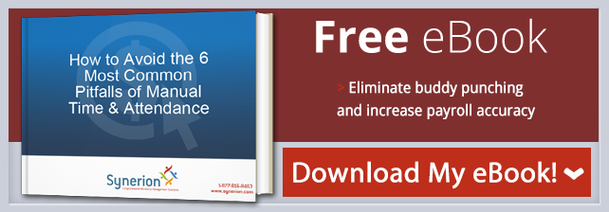 Absence may be impossible to eliminate but reducing the impact of absences on your bottom line is a must. Whether they be planned vacations or a sudden death in the family, planning ahead can help companies ensure productivity and customer service are retained during times of low staffing.
Absence may be impossible to eliminate but reducing the impact of absences on your bottom line is a must. Whether they be planned vacations or a sudden death in the family, planning ahead can help companies ensure productivity and customer service are retained during times of low staffing.
Use these tips to reduce the impact of absences throughout the year.
Ensure Redundancy
While it’s great to have employees who go above and beyond the call of duty, if only one employee knows how to complete a given task, absences can kill your bottom line. When one employee is put in charge of a job duty, your business is vulnerable because that employee can easily go out due to sickness or quit altogether, leaving a void in your workflow.
Ensuring redundancy in your workplace is essential to reducing the impact of absences. Cross-training and additional workflow policies can help spread out assignments so every pivotal task can be completed by more than one employee. Keeping track of which employees are trained in each task can help managers reduce the impact of absences on your bottom line.
Create a Policy
While cross-training can increase redundancy, there will inevitably be times, such as flu season, where multiple employees will be absent, leaving giant gaps in the productivity and workflow of your business. Having comprehensive policies available to all staff can help maintain standards even during periods of high absences.
Policies don't have to be complicated or all-inclusive. A simple step-by-step accounting of the basic duties to get by during times of absence can be enough to keep productivity high. By keeping a catalog of how-to procedures and policies, managers can ensure vital tasks are completed regardless of staffing.
Educate Managers
Often, the impact of absences can be subverted by managers with the right training. Tapping the right person to take over a task or reallocating the workload until a future date can prevent absences from impacting your bottom line without requiring more staff. Educating managers on the options available when a staff member is absent is as simple a meeting with human resources or training on accessing employee training records on your workforce management system.
Using a workforce management system or simply asking managers to contact human resources to determine who is trained to fill in and whether their schedule can be adjusted is essential to preventing absences from impacting your bottom line.
Plan for the Worst
While business owners would prefer things run optimally, a few bumps in the road are inevitable. Many businesses only plan for the best and when they face adversity, their business and their staff are unprepared for the challenge. Preparing for the worst is essential to ensuring that staff absences don’t affect your productivity.
Have disaster policies in place is absolutely essential to ensuring productivity during times of significant absence. Create a core team of employees who can create policies that address how business will run in times of severe staffing restrictions, such as illness or weather-related catastrophes. These policies can help guide management operate efficiently when facing staff absences.
With some foresight and planning, your business can avoid suffering the reduction in productivity and income from absences. By training employees, educating managers, and creating comprehensive policies that encompass not only daily tasks but also disaster planning, your business can survive and even thrive in times of reduced staffing.
